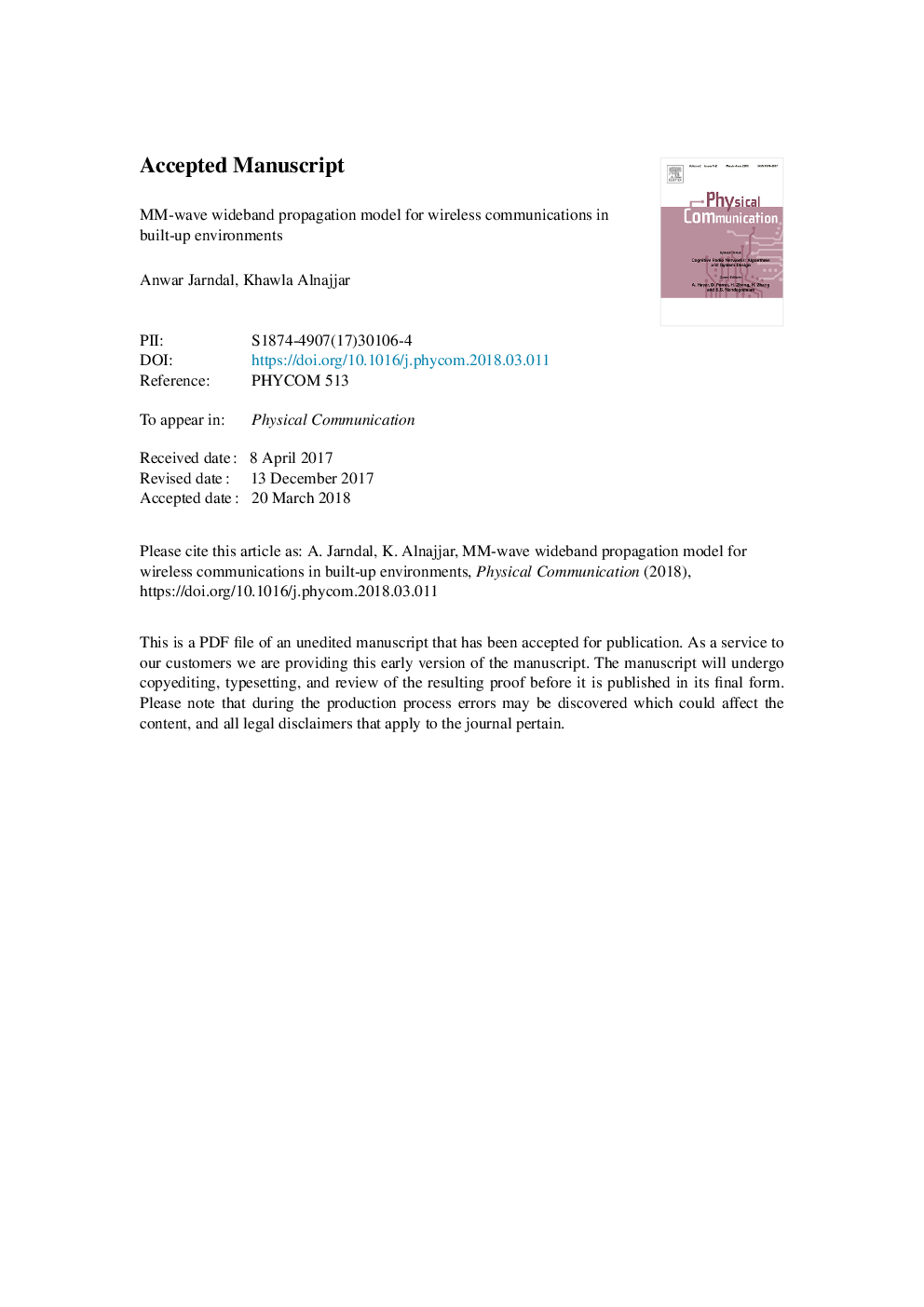| Article ID | Journal | Published Year | Pages | File Type |
|---|---|---|---|---|
| 6889044 | Physical Communication | 2018 | 12 Pages |
Abstract
Millimeter-wave technology is promising for the next generation of wireless communication. An appropriate channel model for typical scenarios in a built-up environment is crucially needed for development of future technologies such as 5G. This paper presents an efficient millimeter wave wideband propagation model that can be used for analysis and design purposes. Unlike the commonly used two-ray and statistical models, the proposed model has higher reliability and accuracy to simulate the considered environment. The uniform theory of diffraction has been used to calculate the total received signal due to multi-reflection-diffraction for both linear and circular polarization. Mathematical formulas have been derived for each considered ray contribution in terms of the building dimensions and the distances between the building, mobile and transmitter. The model has been used to evaluate the performance of the communication system at 28 and 73Â GHz based on signal fading characteristics and power delay profile, and the simulation results have been compared with other published works
Keywords
Related Topics
Physical Sciences and Engineering
Computer Science
Computer Networks and Communications
Authors
Anwar Jarndal, Khawla Alnajjar,
